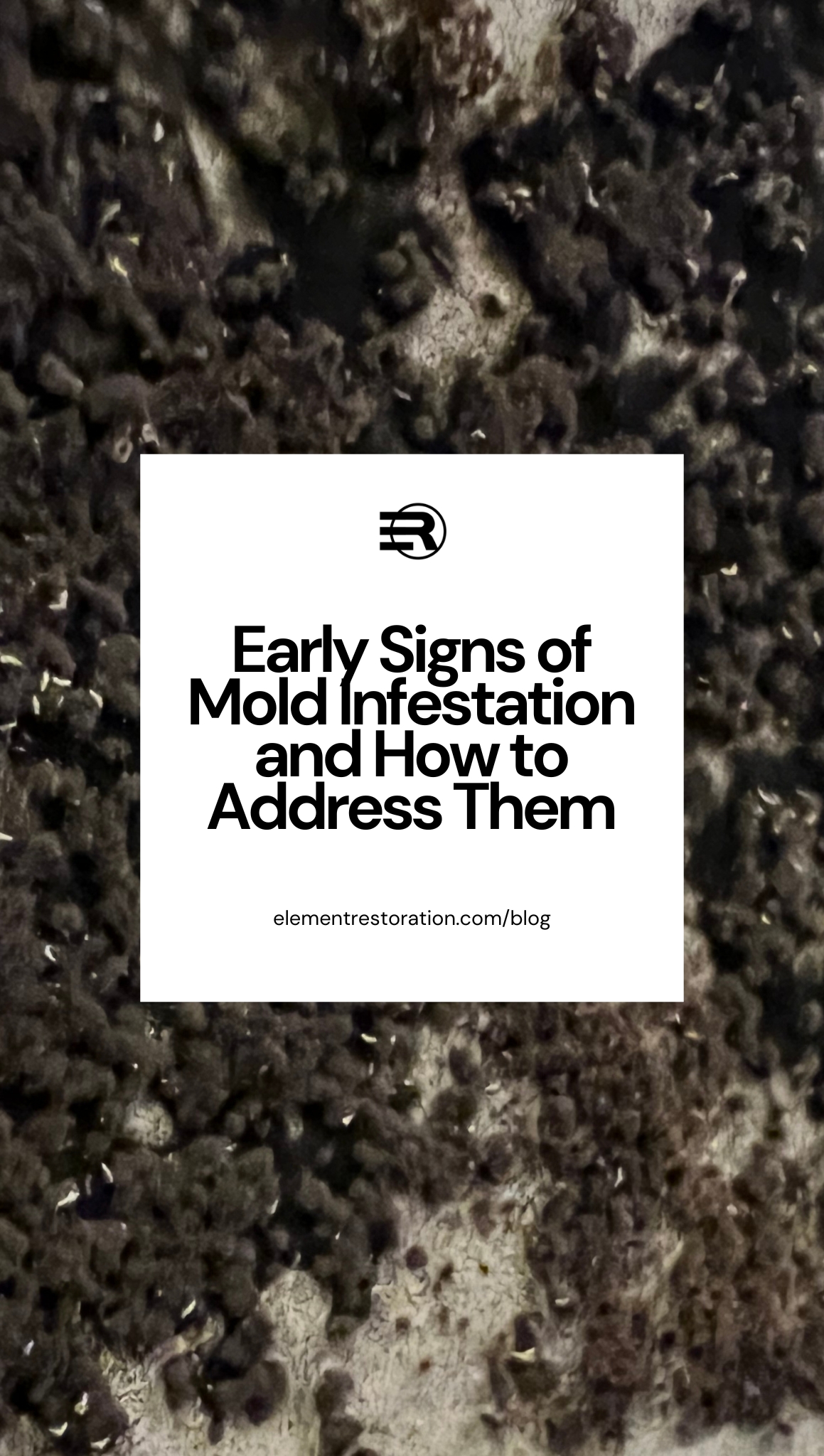Mold is more than just an unsightly problem—it’s a hidden health hazard that can wreak havoc on your home and well-being. Identifying and addressing mold early can save you from costly repairs, protect your health, and keep your home safe. In this post, we’ll uncover the early signs of mold infestation, how to tackle them effectively, and why acting quickly is essential.
1. Visible Clues: Discoloration and Stains
Mold can often be spotted if you know where to look. Here are some early visible signs:
- Surface discoloration: Watch for green, black, or brown spots on walls, ceilings, and baseboards. Mold may also appear as fuzzy white patches in the initial stages.
- Stains around water-damaged areas: Mold thrives in areas affected by leaks or flooding, such as under sinks, behind appliances, and around windows.
- Peeling paint or warped surfaces: Moisture from mold growth can cause paint to bubble and wooden surfaces to warp.
Regularly inspecting areas prone to moisture can help you catch these signs before they escalate.
2. Musty Odors: A Hidden Warning
Sometimes, mold hides in places that are hard to see, but your nose can detect it. Here’s what to look (or sniff) for:
- Persistent musty smell: A damp, earthy odor is a strong indicator of hidden mold growth, even if you can’t see it.
- Localized scent: Pay attention to rooms or areas where the smell is strongest, such as basements, attics, or crawl spaces.
- Worsening indoor air quality: If the odor intensifies after rain or in humid conditions, it’s likely that mold is present.
Addressing hidden mold quickly can prevent it from spreading and causing structural damage.
3. Health Symptoms: Mold’s Impact on Your Body
Even if you can’t see or smell mold, it could still be affecting your health. Early signs include:
- Respiratory issues: Persistent coughing, sneezing, or a runny nose could point to mold exposure, especially if symptoms worsen indoors.
- Skin and eye irritation: Red, itchy eyes or skin rashes are common in homes with mold problems.
- Worsening allergies or asthma: Mold spores can trigger allergic reactions or make existing respiratory conditions worse.
If you or your family are experiencing these symptoms, it’s time to investigate potential mold issues in your home.
Conclusion
Recognizing the early signs of mold—whether visible stains, musty odors, or health symptoms—is the first step to protecting your home and family. Inspect your home regularly, address water damage promptly, and don’t ignore persistent health symptoms that might be linked to mold exposure.
If you suspect mold in your home, don’t wait. Early intervention is key to preventing long-term damage. Call Element Restoration at 850-462-5135 for a free visual mold inspection + all your professional water, fire, mold, and roofing disaster restoration services. Let us help you restore your home and peace of mind.
Contact Us
For more information or to request our services, contact us at:
📞 Phone: 850-462-5135
🌐 Website: www.elementrestoration.com
We serve the Florida Panhandle, frequently serving Pensacola, Destin, Navarre and Panama City. We hope you don’t need us, but we would be honored to help you if you do.
Follow us on social media for more tips and updates:
Stay informed and stay safe, Northwest Florida! Let Element Restoration help you with all your mold remediation needs.

Be The First To Comment